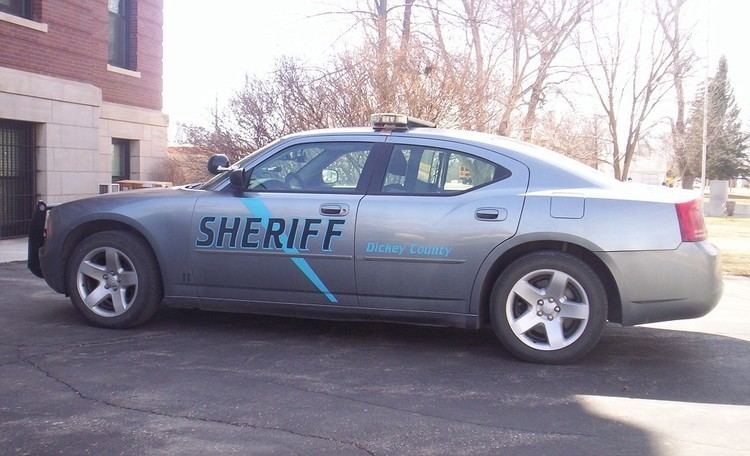Congressional district At-large Website www.dickeynd.com Area 2,958 km² University Trinity Bible College | Founded 1881 Population 5,248 (2013) Unemployment rate 2.1% (Apr 2015) | |
 | ||
Dickey County is a county located in the U.S. state of North Dakota. As of the 2010 census, the population was 5,289. Its county seat is Ellendale. The legislature for the Dakota Territory authorized the formation of Dickey County in 1881, naming it for one of their members, George H. Dickey. An organizing meeting was held on August 28, 1882, at Ellendale.
Contents
- Map of Dickey County ND USA
- Geography
- Adjacent counties
- Major highways
- National protected areas
- 2000 census
- 2010 census
- Cities
- Unincorporated Communities
- References
Map of Dickey County, ND, USA
Geography
According to the U.S. Census Bureau, the county has a total area of 1,142 square miles (2,960 km2), of which 1,131 square miles (2,930 km2) is land and 11 square miles (28 km2) (0.9%) is water.
Adjacent counties
Major highways
National protected areas
2000 census
As of the census of 2000, there were 5,757 people, 2,283 households, and 1,499 families residing in the county. The population density was 5 people per square mile (2/km²). There were 2,656 housing units at an average density of 2 per square mile (1/km²). The racial makeup of the county was 97.78% White, 0.10% Black or African American, 0.35% Native American, 0.50% Asian, 0.56% from other races, and 0.71% from two or more races. 1.35% of the population were Hispanic or Latino of any race. 48.9% were of German, 14.7% Norwegian, 6.7% American and 6.0% Irish ancestry. 92.3% spoke English, 5.7% German and 1.5% Spanish as their first language.
There were 2,283 households out of which 27.90% had children under the age of 18 living with them, 58.00% were married couples living together, 4.90% had a female householder with no husband present, and 34.30% were non-families. 32.00% of all households were made up of individuals and 17.60% had someone living alone who was 65 years of age or older. The average household size was 2.36 and the average family size was 2.99.
In the county, the population was spread out with 23.80% under the age of 18, 10.20% from 18 to 24, 22.50% from 25 to 44, 22.20% from 45 to 64, and 21.30% who were 65 years of age or older. The median age was 41 years. For every 100 females there were 97.20 males. For every 100 females age 18 and over, there were 92.50 males.
The median income for a household in the county was $29,231, and the median income for a family was $36,682. Males had a median income of $26,914 versus $15,668 for females. The per capita income for the county was $15,846. About 11.60% of families and 14.80% of the population were below the poverty line, including 20.40% of those under age 18 and 10.80% of those age 65 or over.
2010 census
As of the 2010 United States Census, there were 5,289 people, 2,180 households, and 1,379 families residing in the county. The population density was 4.7 inhabitants per square mile (1.8/km2). There were 2,636 housing units at an average density of 2.3 per square mile (0.89/km2). The racial makeup of the county was 96.5% white, 0.7% black or African American, 0.6% American Indian, 0.4% Asian, 0.5% from other races, and 1.2% from two or more races. Those of Hispanic or Latino origin made up 1.9% of the population. In terms of ancestry, 56.3% were German, 16.9% were Norwegian, 11.4% were Irish, 7.4% were Swedish, 5.1% were Russian, and 1.1% were American.
Of the 2,180 households, 26.5% had children under the age of 18 living with them, 56.0% were married couples living together, 4.4% had a female householder with no husband present, 36.7% were non-families, and 33.3% of all households were made up of individuals. The average household size was 2.29 and the average family size was 2.94. The median age was 43.0 years.
The median income for a household in the county was $37,179 and the median income for a family was $53,333. Males had a median income of $36,029 versus $25,625 for females. The per capita income for the county was $21,824. About 6.8% of families and 11.0% of the population were below the poverty line, including 9.3% of those under age 18 and 18.2% of those age 65 or over.
